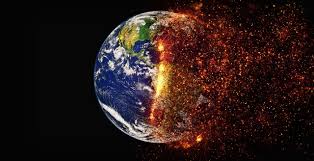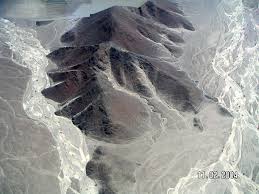Human sacrifices, killer whales with knives, llamas… the new geoglyphs were completely unknown to science until now.
The Nazca Desert , located in southern Peru, is home to one of the world’s greatest archaeological enigmas: an intricate collection of giant drawings as large as football fields that stretch across its arid landscape. Now, an artificial intelligence -assisted study has been able to identify up to 303 more previously unknown geoglyphs in this Peruvian desert.
Read Also:Buffa di Perrero – A Mountain Gem
The first drawings were discovered in the 20th century
Table of Contents
Known as the Nazca Lines
these ancient figures etched into the ground over two thousand years ago have captivated historians, archaeologists and explorers alike, and while the exact purpose of these drawings remains up for debate, it is clear that they represented something very important in the ancient Nazca civilization .
The geoglyphs
which were originally discovered in the 20th century (in 1927, to be exact), are the size of a football field and can only be appreciated from an extreme aerial perspective, an observation point that, logically, would not have been reachable at the time they were inscribed on Earth.
Using AI
To identify the new drawings
the researchers, a team from the Nazca Institute at Yamagata University in Japan in collaboration with IBM Research, used a trained artificial intelligence (AI) model that scanned aerial photos of the entire Nazca Pampa region and surrounding deserts, identifying not only a large number of new Nazca Lines, but also doubling the number of previously known geoglyphs . The AI detected the find, and archaeologists confirmed the discovery in the field. The researchers spent more than 2,600 hours in the field surveying, mapping, and using drone photography to validate all of the previously unknown geoglyphs. It took more than six months to identify the more than 300 new clues.
“We report on the deployment
of an AI system across the Nazca region, a UNESCO World Heritage site, which led to the discovery of 303 new figurative geoglyphs in just 6 months of field study, nearly doubling the number of known figurative geoglyphs,” the authors wrote in their study published in the journal Proceedings of the National Academy of Sciences.
To give us an idea of how efficient
the use of artificial intelligence is for this type of scientific work, the authors explain that the AI model is 20 times faster than humans when it comes to identifying faint lines that point to the Nazca Lines.
What are the new Nazca Lines like?
“The known figurative geoglyphs represent humanoids, animals (birds, monkeys, foxes, spiders, lizards, orcas, whales, fish, felines and camelids), plants (flowers, algae, rhizomes and trees) and tools (needles, looms, pins, fans and musical instruments),” the authors note.
As for the newly discovered art
it features striking figures such as 22-meter-long orcas holding knives, decapitated heads, alien-looking human figures, abstract animals, possible historical events, camels, pairs of primates playing together, and much more , and was likely created by the Nazca culture, a pre-Incan indigenous South American group. The new images are somewhat smaller than the enormous patterns that date from 200 to 700 AD and stretch across more than 400 km2 of the Nazca plateau. But despite being smaller in size, their pattern is much more complex than traditional geoglyphs that are more linear.
Read Also:Colombian Women Lifestyle – Insights & Trends
“We found that the relief
type geoglyphs mainly depict human motifs or motifs of things modified by humans, such as domestic animals and decapitated heads (81.6%). They are usually located within viewing distance (on average 43 meters) of ancient trails that cross the Nazca Pampa and were most likely built and viewed by individuals or small groups,” the experts said.
Even though this find almost doubles the number of known figures at the enigmatic archaeological site, that is not all. The AI has raised many more promising clues in the area that still need to be archaeologically validated with an on-site visit to this UNESCO World Heritage site and the most popular tourist attraction in Peru after Machu Picchu. At the moment, the total number of figures now amounts to 733 in total.
With the advancement of technology
modern exploration methods have opened a new chapter in the analysis of these ancient wonders, offering us the opportunity to finally unravel the motives that led to their creation. It is clear that the successful integration of AI in the field of archaeology promises a bright future for discoveries.









